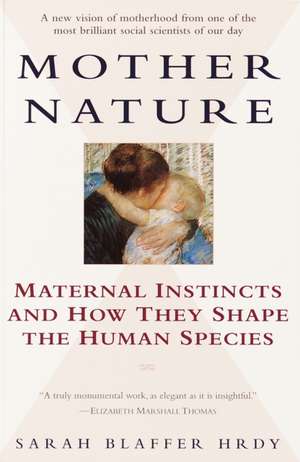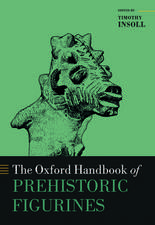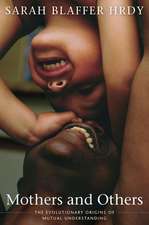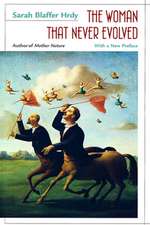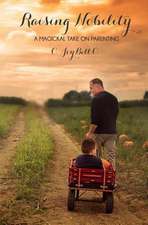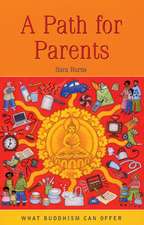Mother Nature: Maternal Instincts and How They Shape the Human Species
Autor Sarah Blaffer Hrdyen Limba Engleză Paperback – 31 aug 2000
Hrdy strips away stereotypes and gender-biased myths to demonstrate that traditional views of maternal behavior are essentially wishful thinking codified as objective observation. As Hrdy argues, far from being "selfless," successful primate mothers have always combined nurturing with ambition, mother love with sexual love, ambivalence with devotion. In fact all mothers, in the struggle to guarantee both their own survival and that of their offspring, deal nimbly with competing demands and conflicting strategies.
In her nuanced, stunningly original interpretation of the relationships between mothers and fathers, mothers and babies, and mothers and their social groups, Hrdy offers not only a revolutionary new meaning to motherhood but an important new understanding of human evolution. Written with grace and clarity, suffused with the wisdom of a long and distinguished career, Mother Nature is a profound contribution to our understanding of who we are as a species--and why we have become this way.
Preț: 138.36 lei
Nou
26.48€ • 27.54$ • 21.86£
Carte în stoc
Livrare din stoc 06 martie
Specificații
ISBN-10: 0345408934
Pagini: 752
Dimensiuni: 156 x 234 x 34 mm
Greutate: 0.75 kg
Editura: BALLANTINE BOOKS
Notă biografică
Sarah Blaffer Hrdy is an emeritus professor of anthropology at the University of California at Davis and a fellow of both the National Academy of Sciences and the American Academy of Arts and Sciences. The author of three previous books, including The Woman That Never Evolved, she lives in northern California.
From the Hardcover edition.
Extras
Above all, there is birth control, which permits a woman to consciously override her ovaries and choose when, or if, she will bear children. Ultrasound and amniocentesis enable women to spend decades in a career and still look forward to bearing a healthy infant. Far from simplifying motherhood, these novel choices have exposed tensions just beneath the cheery surface of our traditional assumptions about what mothers should be.
Today, mothers in developed countries, and with them fathers and children, enter uncharted terrain. Without anyone raising their hands to volunteer, we have become guinea pigs in a vast social experiment that reveals what women who can control reproduction really want to do. Children, too, are finding out what it means to be born to a complex and multifaceted creature who has an unprecedented range of options. It is an experiment-in-progress, with two outcomes already apparent. First, the decisions that mothers make do not always conform to our conventional expectations about innately tender, selfless creatures. Second, whatever today's mother decides is likely to becontroversial in some quarters. Bluntly put, motherhood has become a mine-field, and we are walking through it without so much as a map to guide us.
Politics of Motherhood
The politician who naïvely assumes that motherhood, like apple pie, is still a safe topic quickly learns otherwise. The topic was safe only so long as people took the centuries-old view of self-sacrificing motherhood for granted. This view rested on mankind's assumption that women were designed by nature to be mothers and that they instinctively want to rear every baby they bear. Self-sacrificing motherhood was what women were for, and women in many societies have believed this was their destiny. Overlooked was the huge stake that everyone has in motherhood.
Our sense of self, pride, vulnerability, propriety, and job security, our life-long preconceptions and anxieties, our peace of mind, not to mention our toehold on posterity--all of these depend on what our own mothers, wives, lovers, daughters, and female colleagues do or are expected by others to do. This is why a politician can lose votes for encouraging mothers to stay home, as well as for suggesting they return to work; for pointing out that breastfeeding is beneficial to infants (which it is), as well as for neglecting to mention that it is. One week, newspaper headlines ask, "Is day care ruining our kids?" or decry "A dangerous experiment in child-rearing." Another week, headlines in the same paper will declare, "Infant bonding is a bogus notion" or call for businesses to provide more daycare. At the same time, birth control is still against the law in many countries; and on the sidewalks outside family planning clinics in the United States, near civil war prevails. A visitor to Earth from another planet might well ask how the same creatures that invented sophisticated technology to explore the solar system could display such primitive behavior when it comes to the female reproductive system? No topic of mother politics is so divisive as abortion, and none elicits more irrational debate. In Washington, D.C., in May 1997, a bill was introduced to outlaw a rare type of abortion--the procedure known as dilation and extraction, christened "partial-birth" by opponents. This is an overwhelmingly unpopular, traumatic surgical procedure that no group in the United States advocates, no woman in the world wants, and no doctor is eager to perform. Yet this bill marked the fifty-second time that this particular Congress had debated an abortion-related issue.
Disagreement centered on whether this distressing procedure could still be performed even if physicians deemed it necessary to save the woman's life, to guard her health, or to preserve her ability to have viable children in the future. Those who sought the across-the-board ban were not interested in exploring ways to further reduce the need for this rarely performed procedure (one tenth of 1 percent of the 1.5 million abortions performed annually in the United States) by funding more sex education, birth control, and better prenatal care, or by making it easier to get an abortion early on. Banning late-stage abortion was simply their first step to banning all abortions. The abortion issue is notorious for generating so much "heat" and so little "light." On this particular occasion, one of the senators debating the issue (Rick Santorum, Republican from Pennsylvania) became "so emotional" that the blood vessels leading to his stomach constricted, while those leading to his heart and brain dilated. Responding to signals from the most ancient portions of his brain, his pounding heart caused the face of this deeply threatened mammal to flush "crimson" in preparation for a fight. His voice rose to such a pitch that colleagues had to intervene.
Chances were vanishingly small that any kind of late-stage abortion would ever be applied to anyone he knew. Yet against such odds, the senator had just had a brush with one. He and his wife were informed that the fetus she carried suffered a fatal defect. Even if born alive, the baby, they were told, would not be viable. Infections ensued, and with his wife's life in jeopardy, physicians asked the senator to consider an abortion. The senator, as he reported in a press conference afterward, never even came close to accepting that option. As he saw it, his wife "was in danger of septic shock ...but she was not in imminent danger."
The abortion debate is ultimately about what it means to be a mother; and the senator, like many humans before him, had his own unusually clear notion of what mothers were for. The couple already had three young children, but this fourth birth was given clear priority over his wife's well-being as well as that of her other children. Fortunately, the mother survived. But, as doctors predicted, the new baby died shortly after birth. As the debate unfolded, the rush of blood and pounding heart beneath the senator's coat and tie spoke volumes about motivations far deeper, far older, than members of Congress ordinarily consider. Like all humans, and indeed as is typical of the entire Primate order, the senator exhibited an intense, even obsessive, interest in the reproductive condition of other group members. Like other high-status male primates before him, he was intent on controlling when, where, and how females belonging to his group reproduced. One former member of the House of Representatives, however, sensed that there was more at stake than just the issues under debate. "It's very interesting the issues they select," observed Patricia Schroeder of Colorado. "They don't want to intervene in the bodily functions of men."
Schroeder's quip goes to the heart of the matter. Passionate debates about abortion derive from motivations to control female reproduction that are far older than any particular system of government, older than patriarchy, older even than recorded history. Male fascination with the reproductive affairs of female group members predates our species. Young women of my daughters' generation take for granted a historically unique situation. They regard birth control, precautions against sexually transmitted diseases, women's education and athletic teams, as well as open-ended professional opportunities for women, as innovations here to stay. They view the antiabortion movement in the United States, along with the emergence of powerful political lobbies seeking to substitute "abstinence only" for practical knowledge about human sexuality and reproduction, as too irrational to take seriously. Reports from far-off places like Taliban-controlled Afghanistan, where Islamic fundamentalists seek to deny women personal autonomy (forcing them to stay sequestered in their homes, keep their faces and bodies veiled, and marry as instructed) seem exotic and remote.
It is hard for my daughters and their generation to believe that such forces could ever intrude upon their own lives. Even when the sequestering of women is shown to have measurable costs to the health and well-being of wives and children (as has recently been documented for Afghanistan), they are saddened, but not apprehensive for themselves. They see no connection between innate male desires to control women in earlier times and the attitudes toward women and family that inspire sermons to all-male audiences of "Promise Keepers," or that motivate elected officials to debate endlessly over who has the right to choose whether and when a woman gives birth. Few Westerners take seriously the possibility that old tensions between maternal and paternal interests could explode one day in their own country and transform a world they take for granted. I am not nearly so confident. If age-old pressures are allowed to erode hard-won laws and protections, it is far from certain that the unique experiment we have embarked upon can persist.
Mothers of Us All
With six billion people on the planet, it is easy to forget that we have not always been so numerous. Every person on earth descends from a population living in Africa roughly 100,000 years ago that probably did not number more than ten thousand breeding adults.The Pleistocene epoch, between 1.6 million and 10,000 years ago, was also a time when it was very risky to be born.We are just beginning to understand the full range of hazards and their implications for the attributes babies possess.
Almost all women who reached adulthood became pregnant and bore young.Yet the majority died without a single surviving offspring because so many of those born never grew up. Consider the life history of a hunter-gatherer woman named Nisa.This plucky woman belonged to the !Kung San, a nomadic foraging people who continued to traverse the Kalahari Desert long into the twentieth century, confronting challenges similar to those faced by Pleistocene hunters and gatherers for thousands of years before the invention of agriculture and the domestication of animals for food.
When interviewed for her biography in the early 1970s, Nisa had suffered two miscarriages and borne three daughters and a son--close to the average family size (3.5 children) for a !Kung woman.Two of Nisa's children survived into adolescence, but both died before adulthood. Thirty-six percent of !Kung women would, like Nisa, die without a single surviving offspring. Since all the !Kung women interviewed were postmenopausal at the time, a few more might lose their last child before they themselves died. If we take into account how many women died before they even had a chance to breed, the true proportion of those dying childless is probably higher. I estimate that one-half or more of all !Kung women born died childless.
The death of a child is the most awful occurrence parents can imagine. Fortunately for most of those reading this book, childhood death is a rarity. Unlike Nisa, they live in privileged regions of the globe, at least for the time being, and enjoy an unprecedented standard of living. Nine hundred and ninety-four of every thousand babies born in the United States survive infancy. Yet even though the odds of keeping infants alive have improved astronomically, the chances that a woman in a postindustrial society will die without descendants have not changed that much. In the Sacramento Valley of California, where I live, 40 percent of all grown women who died between 1890 and 1984 left no surviving offspring. But the reasons so many womenin the Kalahari and California populations died childless are quite different. In twentieth-century California, many of the women never married. Others could not, or consciously decided not to, have children, or else decided to give birth to only a few. Almost all infants born survived, so that the average number of children per woman (1.6) was close to the number actually born. The circumstances surrounding motherhood have never been more different. Yet, as I will show in this book, from contemporary countries in which women live in a state of ecological release, no longer constrained by having to forage enough food each day to stay alive and with a broad range of reproductive options, to other parts of the world where they are less fortunate, women are constantly making tradeoffs between subsistence and reproduction that are similar in outline.
Quality vs. Quantity
Depending on the marriage customs in the culture she belongs to, a woman may or may not get to choose the father of her children or the time in her life when she first becomes pregnant. Depending on prevailing values, she may or may not treat her sons and daughters, her firstborn versus her last-born, exactly the same way.Yet, by and large, she will decide how much of herself, her time, energy, and love, she will invest in each child.The father has similar choices, although he may make quite different decisions. In the past, such decisions had a direct effect on both a mother's own survival and that of her children. Throughout most of human existence, to be an infant without a mother, or a child without older kin, was to suffer a life-threatening disadvantage. To have become the ancestress of any one of us today, a mother would have had to succeed in rearing at least one offspring to breeding age. In turn, that offspring would have had to produce surviving heirs. This is why quantity has rarely been the top priority for a mother. The well-being of her children and their quality of life, usually inseparable from her own, were primary. When fidelity to his mate means that a man's reproductive success is identical to his only wife's, he is more likely to share her preference for quality over quantity. Otherwise, and especially if he does not intend to invest in his offspring, a man may simply seek to breed with as many women, and hence sire as many offspring, as he can. It is from such ancestors that we inherit our maternal emotions and decision-making equipment. Underlying tensions between males striving for quantity and females for quality (a simplification I will clarify later) are as old as humanity.Yet this tension has risento the surface and become more conspicuous than ever in the ecological circumstances of a modern world in which women have unprecedented choices.
For example, when young women are given a choice between having children and improving their lot in life, most opt for the latter. At first glance, such a finding seems completely antithetical to predictions from evolutionary theory. In the crass coinage of my Darwinian worldview, success is measured in terms of "fitness," genetic representation in succeeding generations. Access to more resources should translate into people having more children, not fewer. Certainly there is massive documentation that throughout recorded history, quite a few men opted for more.
Kings, emperors, and despots--who had the power to do so--filled their seraglios with fertile women. Feudal lords insisted on droit de seigneur with virgins marrying within their domains, while some American presidents have used their office (literally, the oval one) to enjoy assignations. However, the emphasis on quantity that holds true for male potentates (and surely we don't call them that for nothing) does not hold true for mothers.
Around the world, there is a tendency for people who are better off to have a lower birthrate. This tendency is evident among peasant women in India as well as women in industrialized societies. Witness the declining birthrates in contemporary Japan, or the below replacement fertility that has long characterized modern France and Italy and is increasingly true in established populations in the United States. Wherever women have both control over their reproductive opportunities and a chance to better themselves, women opt for well-being and economic security over having more children. For many, leaving children every day while they work is a matter of survival, the only way mothers can support their families, or the only way they can secure a decent future for offspring. (A big difference between modern industrial societies and people who live by foraging is that children who must not only be fed but clothed and educated become more costly with age, not less.)
But survival does not explain all the choices. Third world peasants just making a skimpy living on small plots of land will trade the clean air and safer environment of the countryside for squalid urban shantytowns with their glimmer of economic opportunity, accepting the deaths of some children from respiratory or gastrointestinal infections in exchange for some prospect of a "better" life. Far more privileged women also may opt for self-realization over reproduction, forgoing motherhood to become artists, pilots, or scientists.
At first their choices appear counter to evolutionary expectations, until we recall that mothers evolved not to produce as many children as they could but to trade off quantity for quality, or to achieve a secure status, and in that way increase the chance that at least a few offspring will survive and prosper. This is why a closer look at what late-twentieth-century women are doing reveals behavior that is not so much "unnatural" as behavior that is in conflict with conventional expectations--all the myths and superstitions about what women are supposed to want.
So how did people in the Western world come to conceptualize female nature and "motherhood" the way we do?
From the Hardcover edition.
Recenzii
-ELIZABETH MARSHALL THOMAS
Author of The Hidden Life of Dogs
"A BRILLIANT, LIBERATING BOOK ON A PROFOUNDLY IMPORTANT SUBJECT."
-E.O. WILSON
Author of Consilience
"THOROUGH, THOUGHTFUL, AND CLEARLY WRITTEN . . . A TROVE OF FACTUAL TREASURES . . . A cornucopia of data and ideas about the biology and behavior of mothers great and small."
-Scientific American
Textul de pe ultima copertă
Maternal instinct -- the all-consuming, utterly selfless love that mothers lavish on their children -- has long been assumed to be an innate, indeed defining element of a woman's nature. But is it? In this provocative, groundbreaking book, renowned anthropologist (and mother) Sarah Blaffer Hrdy shares a radical new vision of motherhood and its crucial role in human evolution.
Hrdy strips away stereotypes and gender-biased myths to demonstrate that traditional views of maternal behavior are essentially wishful thinking codified as objective observation. As Hrdy argues, far from being "selfless", successful primate mothers have always combined nurturing with ambition, mother love with sexual love, ambivalence with devotion. In fact all mothers, in the struggle to guarantee both their own survival and that of their offspring, deal nimbly with competing demands and conflicting strategies.
In her nuanced, stunningly original interpretation of the relationships between mothers and fathers, mothers and babies, and mothers and their social groups, Hrdy offers not only a revolutionary new meaning to motherhood but an important new understanding of human evolution. Written with grace and clarity, suffused with the wisdom of a long and distinguished career, Mother Nature is a profound contribution to our understanding of who we are as a species -- and why we have become this way.
Descriere
Maternal instinct--the all-consuming, utterly selfless love that mothers lavish on their children--has long been assumed to be an innate, indeed defining element of a woman's nature. But is it? In this provocative, groundbreaking book, renowned anthropologist (and mother) Sarah Blaffer Hrdy shares a radical new vision of motherhood and its crucial role in human evolution.
Hrdy strips away stereotypes and gender-biased myths to demonstrate that traditional views of maternal behavior are essentially wishful thinking codified as objective observation. As Hrdy argues, far from being "selfless," successful primate mothers have always combined nurturing with ambition, mother love with sexual love, ambivalence with devotion. In fact all mothers, in the struggle to guarantee both their own survival and that of their offspring, deal nimbly with competing demands and conflicting strategies.
In her nuanced, stunningly original interpretation of the relationships between mothers and fathers, mothers and babies, and mothers and their social groups, Hrdy offers not only a revolutionary new meaning to motherhood but an important new understanding of human evolution. Written with grace and clarity, suffused with the wisdom of a long and distinguished career, Mother Nature is a profound contribution to our understanding of who we are as a species--and why we have become this way.
